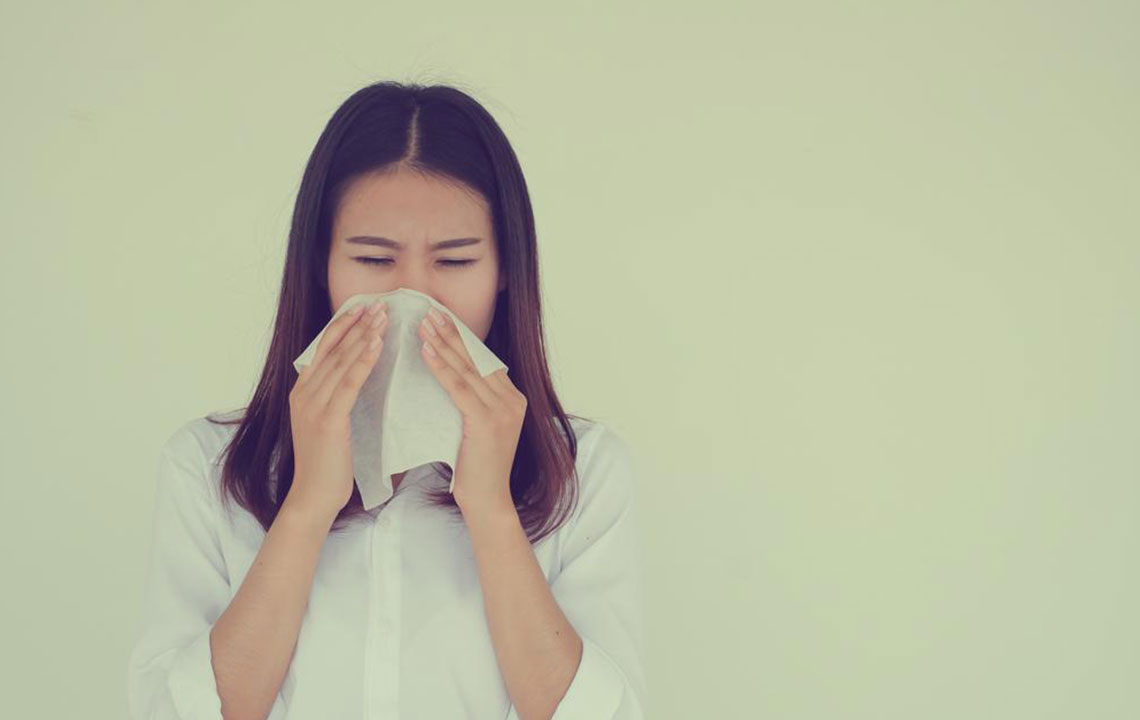Know about the Common Causes of Sinus

Sinus is a swelling or an inflammation that is caused by the lining of the tissues of the sinus. They are a connected system of hollow cavities of the skull. Generally, sinus, when healthy, is filled with air, the problem occurs when these get blocked and get filled by germs which cause a lot of infection in the area. The structures present inside the sinus help to filter the air. The sinus is lined with soft and pink colored tissues called the mucosa.
Sinus is generally of four types: Acute sinus, chronic sinus, sub-acute sinus, and recurrent sinus.The acute sinus lasts about 2–4 weeks; however, sub-acute sinus lasts for about 4-12 weeks. Moreover, chronic sinus lasts for about 12 weeks or more, and recurrent sinus occurs several times in a year. Our cheekbones have the largest amount of sinus, and the frontal sinuses are located in the lower center part of the forehead. Sinuses are also present in between the eyes and in the bones behind the nose. Millions of people develop sinus infections nowadays and this has become a common problem. Even young children are prone to sinus causes and develop this issue which often becomes a lifelong problem.
People who suffer from sinus often experience pain which can be at different levels depending on the intensity of the infection. The forehead and the area between the eyes and the nose can become very painful. When someone suffers from sinus, they are required to blow their nose very often as there is a lot of nasal discharge which can be cloudy, green, or yellow. There is also constant nasal congestion as the inflamed sinus may restrict your breathing patterns a cause immense discomfort. The relentless swelling and pressure in the sinus can give a lot of bad headaches, and even ear pains and dental ache. As the discharge from the sinus drains down the back of your throat it causes immense irritation to the throat area and even a lot of pain is felt. The throat irritation causes a cough as well. Many people who suffer from sinus causes often experience facial tenderness.
Common sinus causes
– Nasal polyps tissues grow and often block the nasal passages or sinuses. This is one of the most common sinus causes.
– A crooked spectrum, which is actually the wall between the nostrils, may restrict or block sinus passages.
– If someone has asthma, then they are very likely to develop sinus problem as well. So it’s always better to take care of the health to avoid the manifestation of sinus causes.
– A lot of people, who are allergic to aspirin, can get sinus because it causes respiratory issues and breathing problems.
– A lot of different allergies such as Hay fever are prominent sinus causes as these allergies block the sinuses.
– An immune system disorder such as HIV/AIDS can also cause sinus and other diseases.
– Infections that occur in the respiratory tract, like common cold can inflame or even thicken the sinus membranes which in turn blocks the mucus drainage.
– Regular smoking is one of the major sinus causes, and living in a much-polluted environment can do the same.
– Many times, a simple nasal congestion or cold and aggravate or cause sinus.
– Some people might be sensitive or allergic to different things in the environment or even food items, and these allergies often irritate the sinus and cause an acute sinus issue. These particular items swell up the sinus tissues.
– Most sinuses start with a viral or bacterial infection, so it’s highly important to maintain and live in a clean, healthy environment.
– If you are someone who is prone to easily get allergies, you should strictly stay away from those particular things. To avoid sinus, it’s also very important to stay away from the things that can trigger the sinus irritation.
– When a person is suffering from a certain bacterial infection, he or she should be aware and take good care of their health as these can be one of the most common sinus causes, which would aid in the development of a very discomforting condition.
– Irritating pollutants or pollutants in the air such as dust, pollen, air, or strong perfumes can also trigger the sinus which can get infected and become all swelled up.
– Chlorinated water is also one of the major sinus causes. If you are someone who’s prone to suffering from sinus, then avoid staying in swimming pools for a long period of time, as chlorinated water tends to irritate the sinus. Even diving in the swimming pool can be discomforting, as the pressure during the dive can directly reach the sinus and inflame the tissues.
– Flying in an aircraft can also cause the sinus tissues to swell. This happens because of the air pressure that goes down and forms a pressure in our head which can be painful for the sinus.


